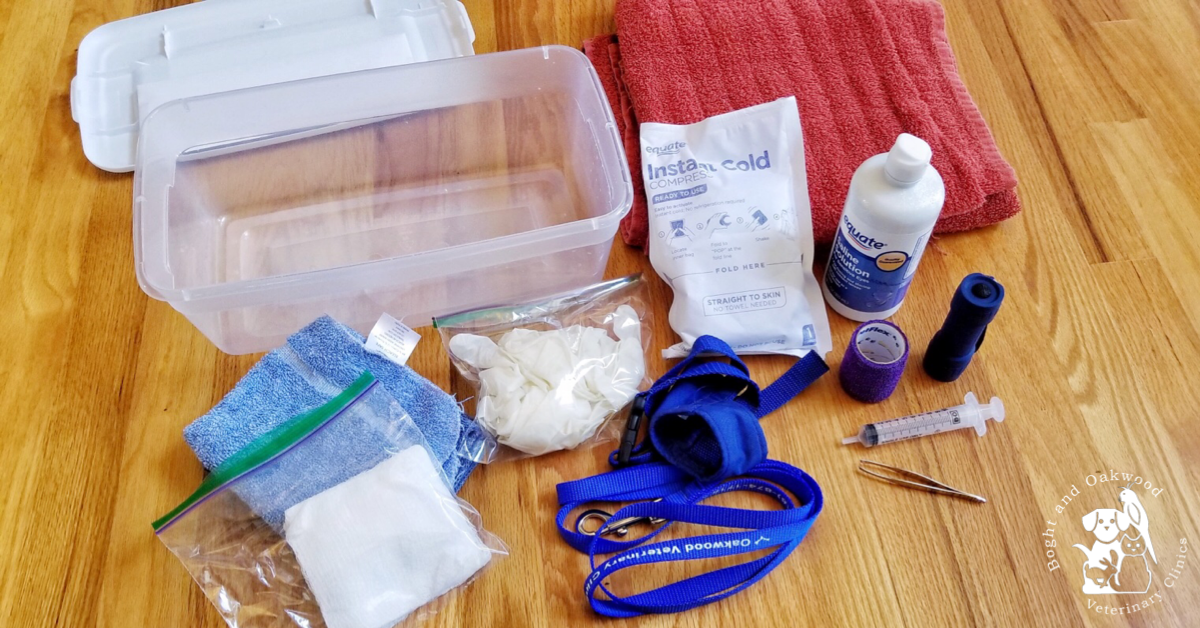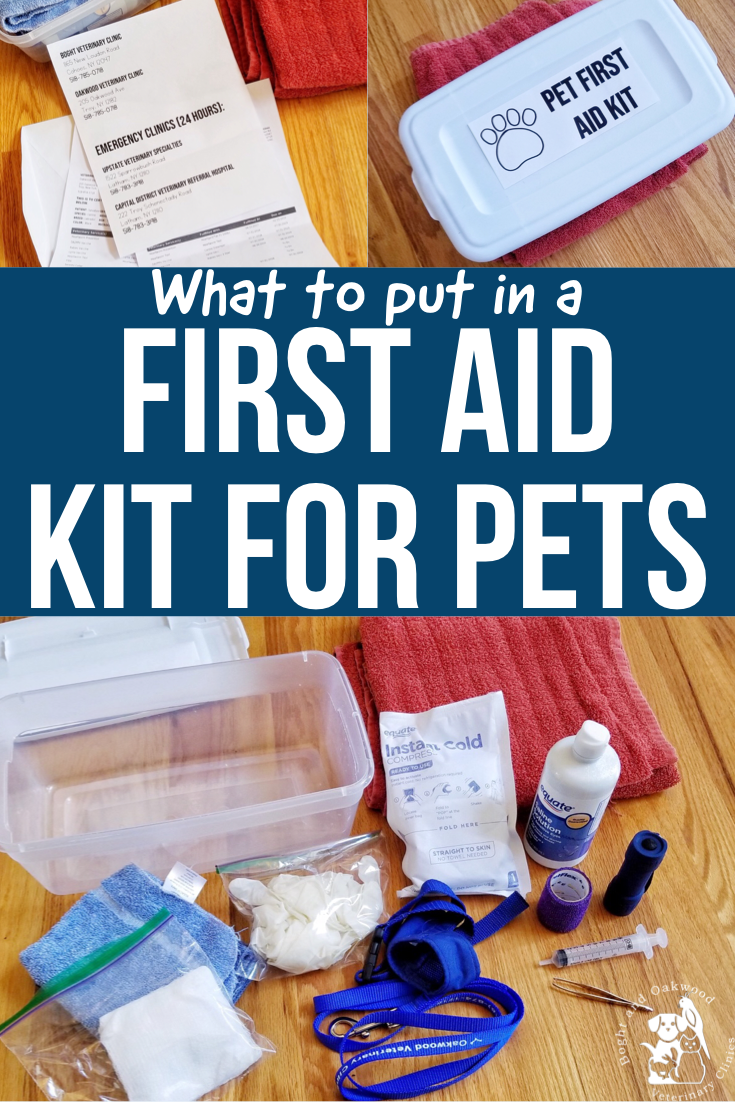
April is Pet First Aid Awareness Month. While we will always recommend that you seek the advice of a veterinarian anytime your pet is injured or ill, it is never a bad idea to be prepared at home. Just like having a first aid kit for your own bumps and bruises, a Pet First Aid Kit can come in handy. You can purchase pre-assembled Pet First Aid Kits, or assemble your own as described below.

First, you will need a container to hold your kit. A plastic shoebox case is perfect. Keep your kit somewhere easy for you to access, but out of the reach of your pets and kids. An upper kitchen cabinet, or coat closet shelf is a good place. Once you have a spot for your kit, make sure everyone in the family knows where it is. Let any pet sitters know where it is as well.
Next, put an envelope in your kit with the following information: a copy of your pet’s vaccine history, chronic medical conditions, and any important medical notes. Ask your veterinarian what you should include. You should also include the phone numbers and addresses of your local veterinarian as well as the phone numbers and addresses of the emergency clinics in the area. This way you will never have to scramble to find phone numbers. Even better, program them into your phone!


Now it is time to fill your kit with the various first aid items. Many of these items are similar to what you will find in a human first aid kit, with a few additions.
Saline Solution – Pure saline can be used to clean a wound on your pet. Squirt the solution carefully into small wounds at an angle to flush out any debris and bacteria. Please note that most contact solutions are not pure saline. Carefully read the label to ensure you have a Saline Solution.
Absorbent Gauze Pads – Gauze pads are the first layer when wrapping a wound on your pet. The gauze will absorb blood so that your pet does not bleed in the house or car on the way to the Veterinarian. If you don’t have gauze you can also put a few washcloths, or a small hand towel in your kit.
Self-Adhesive Bandage Cover – These covers are used on the outside of the gauze to hold the gauze in place. We recommend getting something specifically for pets, that will not stick to their fur. Be sure to not apply the wrap too tightly as it can cause a loss of circulation which would further complicate the injury.
Exam Gloves – Using exam gloves when providing first aid protects both you and your pet. First, they keep your hands clean. They also protect your pet from any dirt and bacteria that may be on your hands.
Oral Syringe – These can be used to flush out wounds with water. A turkey baster or something similar can also be used.
Instant Cold Pack – A cold pack can be applied to bee stings or other swellings. Be sure that there is always something between the cold pack and your pet’s skin. If you have a pet with thick fur the cold pack can be applied directly to the fur. Otherwise, it is recommended that you wrap it in a towel first.
Tweezers – Tweezers can be used to remove ticks or other large debris from a wound. You can also find specially designed tick removers, which may be useful if you live in area with a high incidence of ticks.
Flashlight – Keep a small flashlight in your first aid kit to help you see in between toes, inside the nostrils, the mouth, and the ears. However, you should never shine the flashlight directly into your pet’s eyes.
Extra Leash and Collar – In the event of an emergency, you do not want to be scrambling around the house looking for your pet’s leash and collar. Keep a spare in the kit so you always know where one is. The leash can also be used to hold your pet in place while you are administering first aid.
Soft Muzzle – Even the sweetest of pets can bite when they are feeling hurt and scared. A muzzle can keep you safe while administering first aid.
The hope is that you will never need to use your first aid kit. However, having one ready, and being prepared will help put you and your pet at ease in the event of an emergency. Always be sure to call your Veterinarian right away if your pet is sick or injured.


